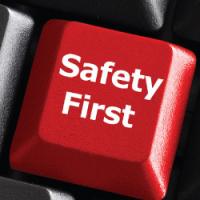- Posts: 350
- Thank you received: 11
Safety Tips for Hot Work
- Safety Toolbox Talk Webmaster
-
 Topic Author
Topic Author - Offline
- Administrator
-

When you weld, cut or grind, the potential for accidents is significant. Eyes and skin can be burned, hearing can be damaged and an electric shock can kill you. Among the hot metal, sparks and flying chips, are compressed gases stored in high-pressure cylinders. Even the fumes and gases produced during the welding process can damage your respiratory system or cause asphyxiation.
It's crucial to be cautious. Wear your personal protective equipment (PPE), maintain a safe workplace and follow safety rules.
Your PPE should include:
- Eye protection to shield against sparks, molten metal and welder's flash
- Hearing protection
- Clothing made of heat-resistant materials, such as an apron made of leather
- Safety boots
- Gloves made of leather or other flameproof fabric
- Respiratory protection to protect against toxic chemicals and gases. Before you use a respirator, get proper training and have it properly fitted.
Wearing the right PPE is just the first step. You must also keep your work area safe and follow these safety rules:
- Try to weld only in well-ventilated areas.
- Work in confined spaces only if they’ve been atmosphere-tested. Follow all other confined space procedures.
- Do not weld, cut or grind near flammable or combustible materials, liquids, vapors and dusts.
- Have the appropriate fire extinguisher close by.
- Use only approved equipment in good condition and follow the manufacturer's instructions.
- Inspect equipment for loose connections, bare wires or cables before operating. Make sure the machinery is properly grounded.
- Handle compressed gas cylinders safely, following proper use and storage procedures.
- Keep aisles and stairways clear of cables and equipment.
- Keep other people a safe distance from welding and cutting operations.
- Learn first aid techniques for burns, poison inhalation, shock and eye injuries.
- Know where the safety showers and eyewash stations are and how to use them.
You should also watch for symptoms of metal fume fever, caused by breathing fumes formed while welding. Symptoms may include a metallic taste in the mouth, dry nose and throat, weakness, fatigue, joint and muscle pain, fever, chills and nausea. Notify your supervisor immediately if you experience any of these symptoms.
Please Log in or Create an account to join the conversation.
